One of the reactions that I get about The Banh Mi Handbook has to do with the price of banh mi. That’s to say, if I can get banh mi for a few dollars, why should I want to make it? Why do I need your book? My initial reaction is that that person is not necessarily my audience. He/she is an eater, not a cook. Nevertheless, my publisher and I made sure to give people value in producing a cookbook that retails for less than the price of say, a fancy pizza.
Since the book came out, I’ve been having conversations with a few Viet-American friends in food about the price of ethnic food and why many people think that good ethnic food should be low-priced. This isn’t about racial differences because you often hear Asian people remark about how wonderfully cheap something is. It’s like we know how much labor some foods take to produce yet we’re not fully willing to pay for them. Many of us are cheapskates.
It’s a funny mindset because in Asia, just like elsewhere in the world, food is available at many price points. While I was in Saigon last January, I snapped a number of photos of banh mi vendors. Each one caught my eye for their beauty (the light, colors, etc.) or their menu. Two of the banh mi vendors were part of Robyn Eckhardt and my quest for the best banh mi in Saigon for her Wall Street Journey story. Yesterday I looked at the images I snapped and noticed that they provided interesting insight into banh mi prices in Vietnam. Note the following exchange rate:
1 US or Australian dollar ~ 20,000 Vietnamese dong
Low-priced banh mi:
Banh mi op la is a fried egg banh mi (8000 dong). Banh mi cha (10,000 dong) is a sandwich made with slices of Vietnamese silky sausage, think mortadella but a little snappier. Banh mi heo quay is filled with Chinese-style roast pork (12,000 dong). We're talking roughly 50 cents for banh mi from this vendor, who will also serve you lunch (com trua) for about 1 dollar.
Moderately-priced banh mi:
Here, the heo quay roast pork was made in the shop behind the stall, as I recall. They put some of it in in banh mi for you if you pay 15,000 dong (75 cents).
If you want a kilo (2.2 pounds) of the roast pork, it would set you back about 12 dollars. At 5 dollars a pound in Saigon, that's not dirt cheap.
The doner kebab guy charged 20,000 dong (1 dollar) for one of his Turkish-German-Vietnamese sandwiches. He has specialty meat, mayo/yogurt sauce, and actually used a type of flatbread. There were customers when I walked by. He likely sold out nightly, judging by his nearly naked spit.
High-priced banh mi:
I paid 25,000 dong (1.25 dollars) for the dac biet sandwich at the top of this post. It was pretty good, well filled and balanced. If you want a regular sandwich (banh mi thuong), you pay a little less.
The banh mi shop kept hours described as "24/24" -- in other words, it never closed. We were there at 11 p.m. on a weeknight and there was a line.
With exception to the bread, everything else in this dac biet was made by the vendor in her nearby apartment. Mai sold out daily and hers was a lovely banh mi, priced at 25,000 dong (1.25 dollars).
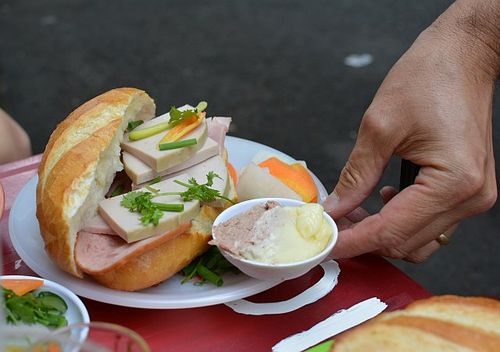
I believe that this was around 30,000 dong (1.50 dollars) at Banh Mi Hoa Ma. The bread was denser than most, with great flavor. The meat was thickly sliced and the pickles were terrific. It was a stick-to-your ribs banh mi. The shop located on a busy corner since 1963 has maintained its quality over the years; it is known for a skillet breakfast of fried eggs and bread too. On Foody.vn (a Vietnam-version of Yelp), reviewers said that the prices were high but the flavors were good.
Saigon is an expensive city compared to other places in Vietnam. Nevertheless, the wide range of prices for banh mi -- from 50 cents to 1.50 dollars, demonstrate that there are people willing to pay more -- double or triple the price, for a well-crafted, good sandwich.
In the U.S., let's say the low-price banh mi average $3.50 each in Little Saigon shops. Prices differ between high-rent districts and the quality of ingredients. In San Francisco, when John Kauffman and I went out on our banh mi expedition, the prices ranged from $4 to 7 dollars, depending on the neighborhood.
In Los Angeles, modern spots like Hero Shop offfer new banh mi twists and charge between $8 and 11, and use high-quality ingredients. At East Borough in Culver City, the banh mi range from $11 to 13. Chicago's Saigon Sisters offers banh mi for $7 to 9 each. These are not contenders for Lee's Sandwiches or the mom-and-pop shops in Little Saigon enclaves. They are crossover businesses.
Looking at the prices, I did the simple math. Interestingly, when you apply the currency conversion rate, the price range of $3.50 to 13 in America is roughly the same as 9,000 dong to 30,000 dong in Vietnam.
When I first set out to write this article, I thought of naming it "Rethinking the Price of Banh Mi." But then I thought about it and realized that it doesn't need to be rethought. It just needs to be thought about because there is indeed banh mi for everyone and every budget.
As my mother says, "Tien nao cua nay." You get what you pay for.
And if you venture to make your own banh mi, you can truly call all the shots. Your banh mi will likely taste like a zillion bucks. Priceless.
When you go out for banh mi, where do you go? How much do you pay for a Vietnamese sandwich?













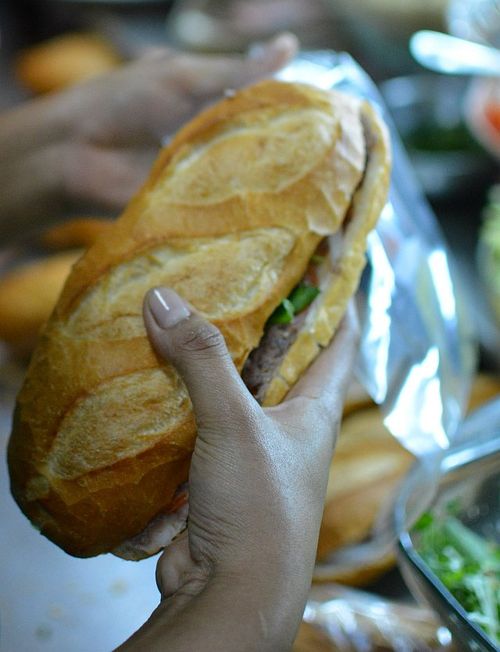
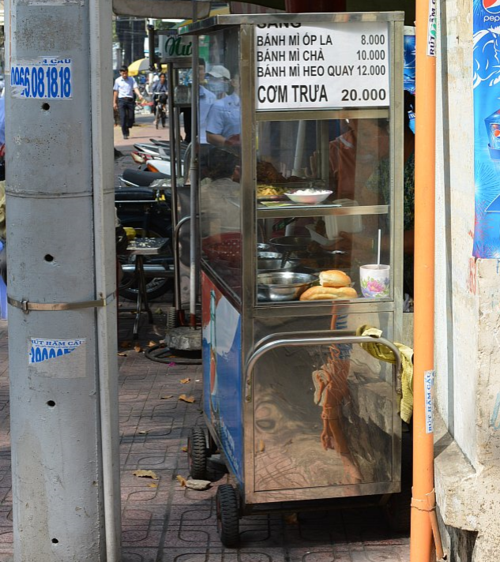
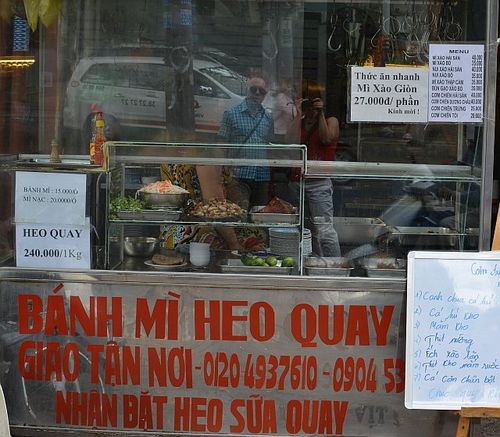
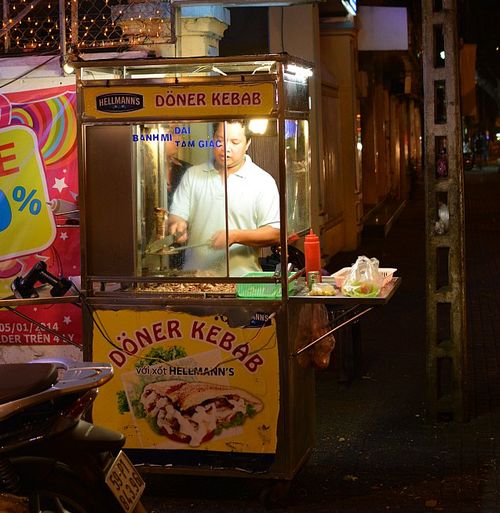
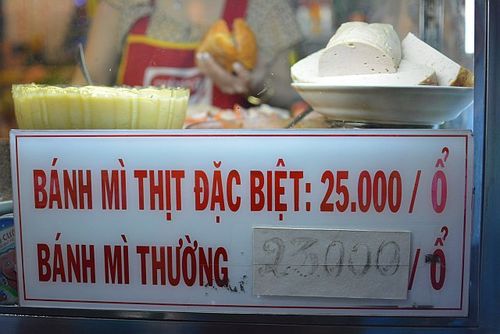
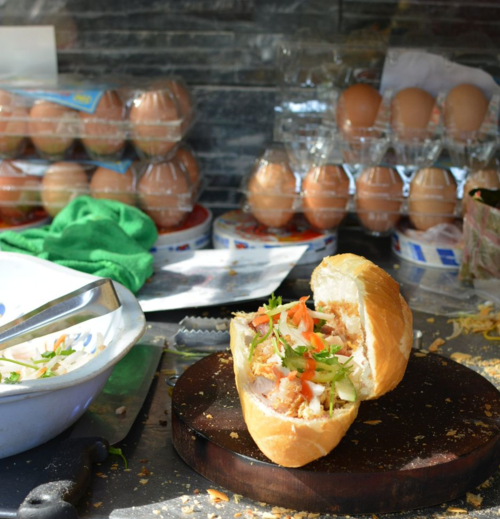
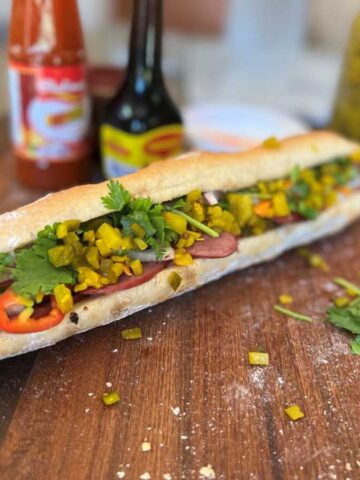

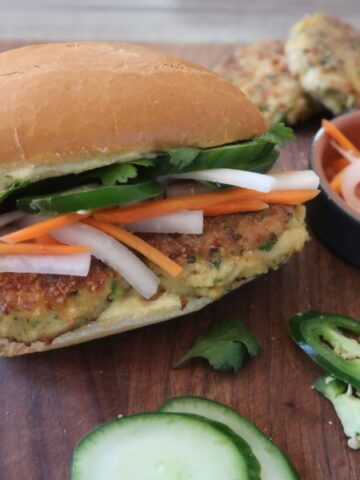
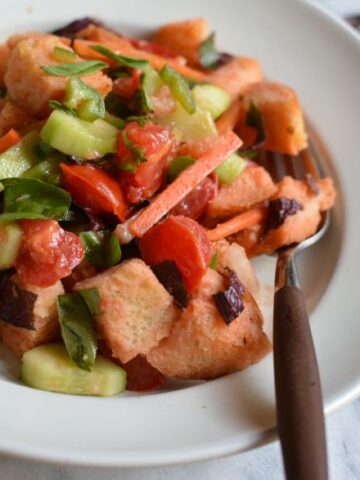
Klaus Heil says
Hey, nice text and I was shocked how expensive banh mi is in the U.S. .
But to be honest, in Vietnam there might be different prices but as a tourist they offer banh mi for the double price first and you have to bargain even for such a little thing like a sandwich. (And of course 50 cent).
So like your mother says: "you get what you pay for, except you are a tourist, then they try to fool you". 🙂
Andrea Nguyen says
Indeed! I don't bargain with the food vendors in Vietnam. I'm happy to make their lives a little happier.